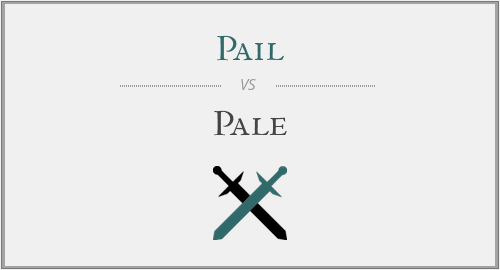Confusing them, sometimes often, is a natural result of how similar they are - so you are owed a clear explanation of their definitions, in order to understand once and for all, when to use "pail" and when to use "pale". So, if you're looking for that explanation, here it comes!
Pail vs. Pale
Neither of these words are difficult to understand or remember. In fact, both are common, everyday words used in the English language. And the first aspect that will help you see how distinct they are is their grammatical functions. They can never be synonyms, or replace one with the other, because they represent different parts of speech.
One always functions as a noun alone, and the other always appears as an adjective alone. And this is why it's essential that you don't misspell these words, otherwise your message will certainly confuse your audience.
When do we use "pail"?
"Pail" is a noun. It always appears as a noun, in any sentence, and it defines a container with a handle and with an open top, which is used to carry liquids. It is a perfect synonym for the word "bucket".
Example: They used to carry water from the well back home using a pail. - "pail" always appears as a noun and it is a perfect synonym for "bucket".
When do we use "pale"?

"Pale" always appears as an adjective. The word is usually used to describe colors or shades of colors which are lighter or have less intensity in their shade than usual.
Example 1: She chose to color her walls in pale yellow. - "pale" describes a lighter tone of a certain color.
Example 2: - The shock hit her so hard that her face went pale in a matter of seconds. - "pale" can also be used to describe a face that has less color than usual due to some kind of illness or fear.
Conclusion
The best trick to remember the correct meanings of "pail" and "pale" and never mistake them again is to visualize in your mind a 'pale' color palette. This will immediately remind you that this is the adjective describing very light, less intense color, whereas "pail" is the noun that defines the same object as "bucket".




Have a discussion about this article with the community:
Report Comment
We're doing our best to make sure our content is useful, accurate and safe.
If by any chance you spot an inappropriate comment while navigating through our website please use this form to let us know, and we'll take care of it shortly.
Attachment
You need to be logged in to favorite.
Log In